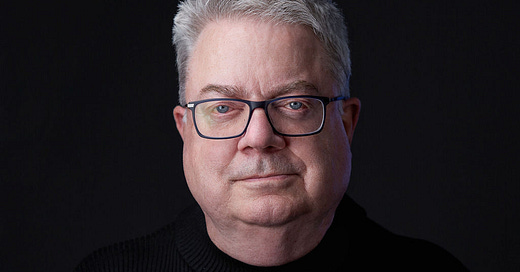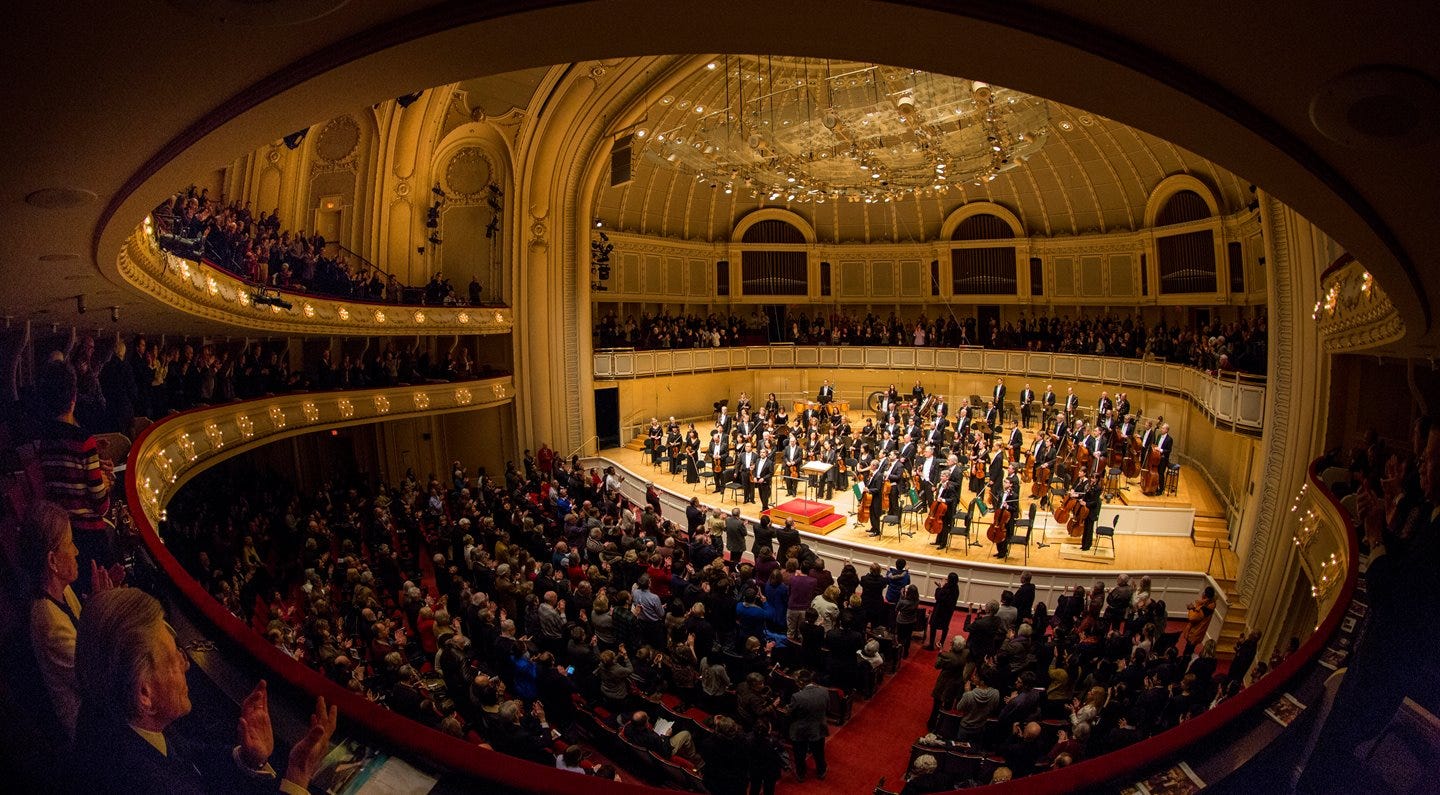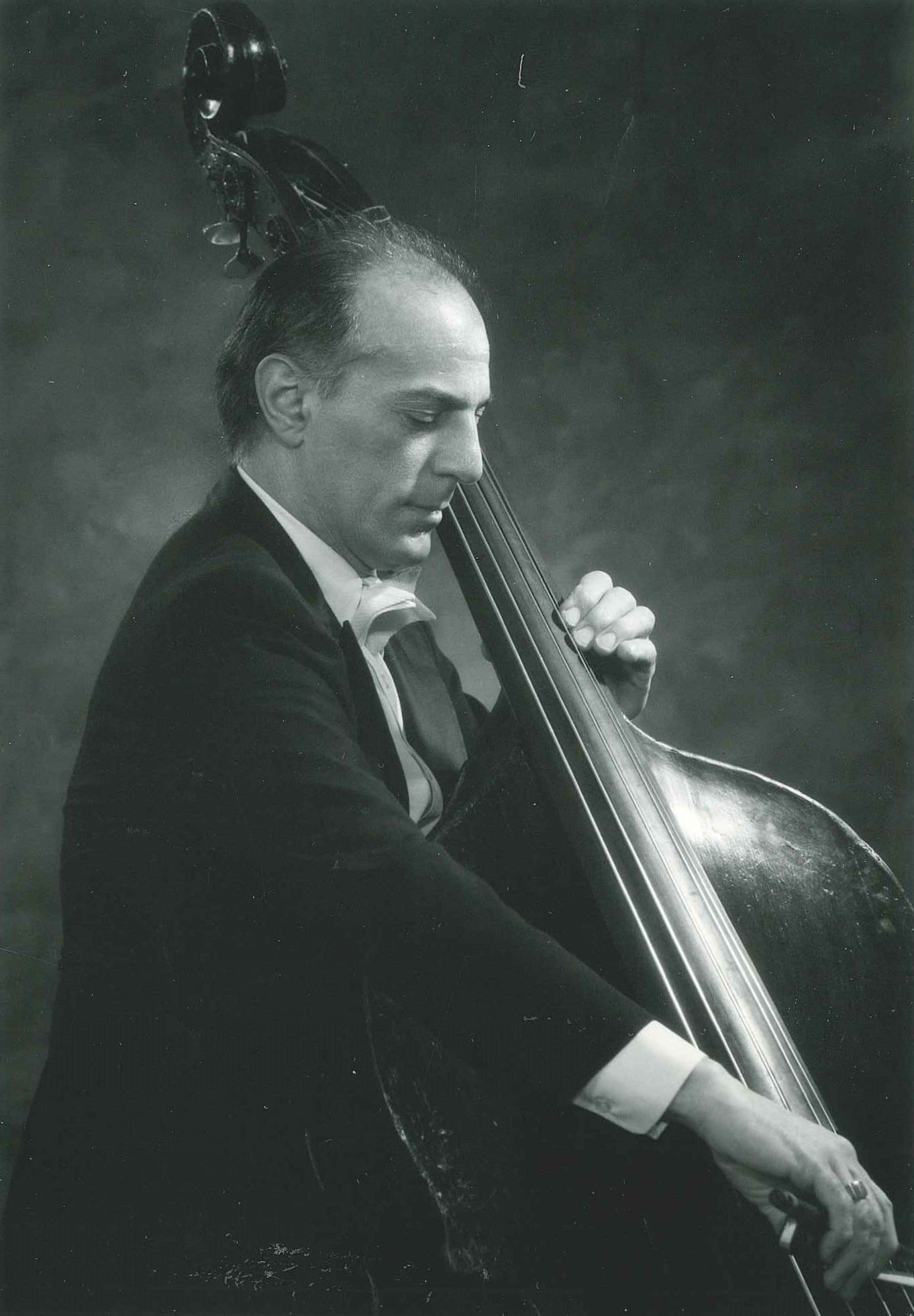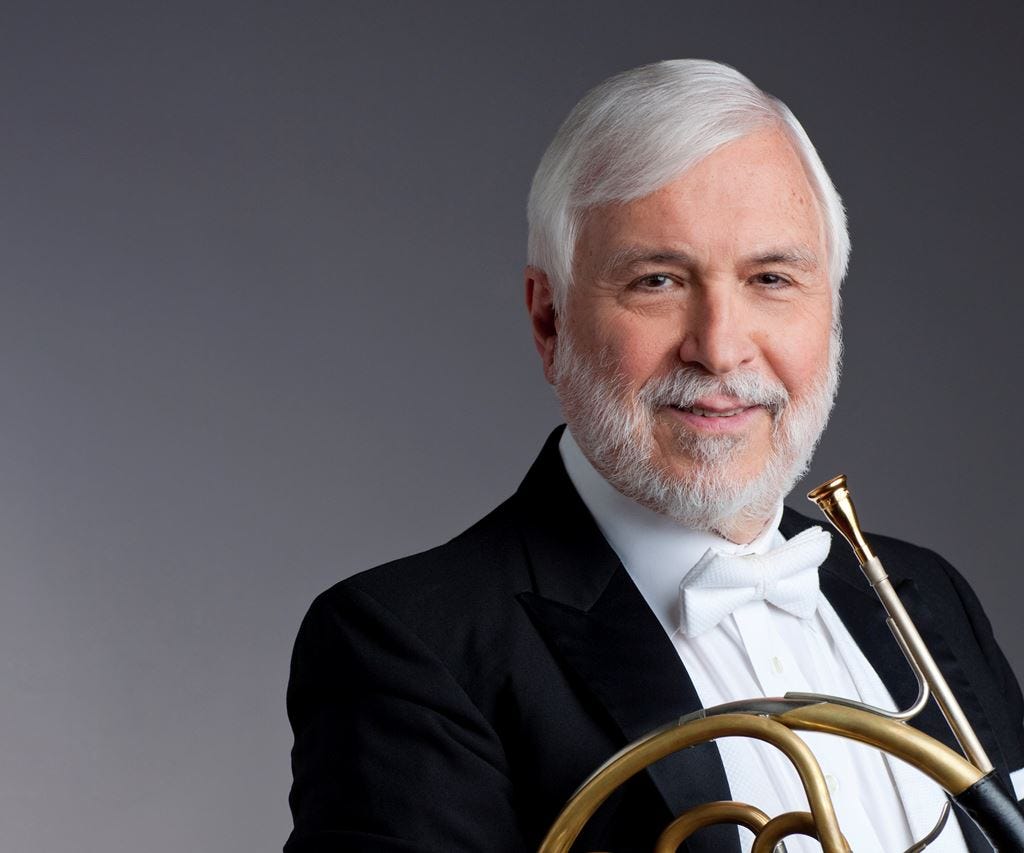The Chicago Symphony Orchestra
I began playing the bass when I became a freshman in high school and was assigned to a string orchestra. I had hoped I could play the tenor saxophone in the marching band, but I registered a perfect score on a “Musical aptitude test” that we were given just before school began that year. The students who scored highest on that test were automatically assigned to the string orchestra, as the thinking was that stringed instruments were a greater challenge than band instruments to learn how to play and to get good results from in a short period of time. Whether or not that is true, the assignments were made, and I was assigned the bass mainly because I was one of the taller boys in the class and my hands were larger than most. That was the main criteria.
The string orchestra was pathetic, directed by a teacher who I am convinced did not like teenagers and didn’t like teaching. I believe her dream of becoming a concert violinist didn’t work out and from that point forward, she became bitter and resented the fact that she had to teach high school to make a living. Although I had eventually become to enjoy bass playing, the class itself was miserable.
The following year, I was fortunate to audition for the All-City Orchestra and was invited to join that group. They had an excellent conductor, and the kids were the best high school musicians in the city, and that experience saved me from possibly deciding to quit music altogether. I finally was in a musical setting that was fun and challenging.
Sometime during my junior year, I had become even more interested in music and it started to appear as if I might take the activity quite seriously. As a result, I convinced my parents that I needed the finest teacher I could find and that they could afford to get my playing to a level of excellence relative to that period of my development. They gave their consent and due largely to my naivety, I decided to call the principal bassist of the Chicago Symphony at his home and ask if he would provide me with private instruction. It was sort of like wanting to play high school baseball and asking Sandy Koufax to teach me how to pitch. For whatever reason, the teacher, Joseph Guastafeste, a living legend in the symphonic world, invited me to meet him in the basement of Orchestra Hall to begin taking weekly lessons.
Joseph Guastafeste
Each week, I would board a train for the one-hour ride to downtown Chicago and I would meet Mr. Guastafeste in the Orchestra Hall musician’s dressing room, a huge expanse of wardrobe and instrument lockers sometime in the late afternoon. At the conclusion of each lesson, he would give me a ticket to the concert that evening if the orchestra was performing. I would then go to a diner next door, have a bite to eat, and return to the hall to hear the concert. My seat was almost always close to the stage and on the right side where the bass section was located…a real bird’s eye (and ear) view. Again, perhaps because of my lack of proper exposure, I had no idea that each week I got to hear what many felt was the finest symphony orchestra in the entire world. I knew I was lucky to have a great teacher and to hear concerts frequently, but I had no grasp of how close I was to the highest form of musical excellence. I just recall thinking, “They’re pretty good.”
Prior to my senior year, Mr. Guastafeste invited me to become a member of the Civic Orchestra of Chicago. It was administered to by members of the CSO, and the students were made up of individuals who had already decided they would be entering professional training programs at the finest conservatories and universities in the nation to major in music and then enter the profession full time. It is hard to describe how enjoyable an experience that was for me, especially when compared to the inferior music program I still had to participate in at my own high school. Ultimately, that environment, rubbing shoulders with mentors from the CSO, and the enthusiasm of my fellow students led me to aspire to attend college to study music at a high level, in hopes of one day becoming a professional musician. I truly felt as if the Chicago Symphony Orchestra was MY orchestra, in much the same way I felt that Ernie Banks was MY man whenever I was fortunate enough to see him play for the Chicago Cubs in the friendly confines of Wrigley Field.
I was most fortunate to audition for and be admitted to the Jacobs School of Music at Indiana University the following fall to begin my college career. That program was referred to as, The Juilliard of the Midwest” and was on the same level as Juilliard. It was an honor to be part of that world and making music my full time focus in that great institution remains one of the high points of my life to this day.
Upon graduating from college, I was hired to play in the Orchestra Sinfonia de Jalapa, Mexico, one of the three national orchestras in Mexico. I stayed with them for about a year but decided to move to Chicago to begin my career as a freelance bassist. I then became established primarily as a jazz musician, as that was a concurrent involvement that I had also had since high school, and eventually became my calling in the profession. Before long, my phone was ringing frequently, and my calendar remained full of professional engagements. One group I performed with on Monday nights went by the name, “Ears,” playing jazz from all eras. Most of the members of the band were Chicago veterans and well established in the Chicago recording studios, recording numerous radio and television advertising commercial jingles during the day, and playing jazz gigs at night.
When the CSO was performing, some of their members would come to hear us and unwind after their performance that occurred earlier that evening. Occasionally, a few players from the CSO would sit in on our last set and play a tune or two with us. The regulars included the principal French horn player Dale Clevenger, and the principal E Flat clarinetist Larry Coombs. They were obviously virtuosos and had just enough experience to improvise with us on some of the simpler song forms. It was a highly unusual circumstance, but I loved the idea of playing with such highly esteemed players. Ironically, the CSO members seemed to admire the fact that we could improvise and play almost entirely by ear, instead of playing written music under a conductor. They seemed to think that we were the “Heavies” while we thought the same of them. It was sort of a mutual admiration society.
After a couple years in Chicago, I decided to make the big move to the Big Apple, New York City, to participate in what is considered the ultimate environment for jazz musicians. It was indeed a move into a higher level of musicianship and many of my idols were established in New York, and I aspired to work alongside them. Fortunately, with enough time and effort, I gained entrée into that community and managed to have a fruitful career.
Dale Clevenger
Fast forward to 2017 when I was invited to teach jazz bass at my alma mater, Indiana University. I commuted every other week and taught for a few days during each visit. When I began that post, I was unaware that Dale Clevenger had retired from the CSO and accepted a position as professor of French horn at IU. You can imagine my surprise when I was walking down the hall one afternoon in my first fall semester and looking up, I saw Mr. Clevenger walking toward me. Our eyes met, we both did a double take, and the grey matter in our heads finally allowed us to recall how we knew one another. Soon after our initial reunion, we would frequently meet in the hallways and relate our back in the day stories of the fond memories we shared of our Chicago days. I believed we both very much enjoyed reminiscing from time to time.
If you are at all familiar with the history of my professional career, you are undoubtedly aware that I am primarily an established veteran in the jazz music field. I would think that after reading this story of my Chicago Symphony Orchestra roots, one may wonder how it is that I became a jazz musician rather than following the path of the symphony orchestra track. If you are one such reader of this part of my story, I invite you to continue to read my weekly blog. I’ll let you in on that part of my story in one future entry. Stay tuned….
TC






